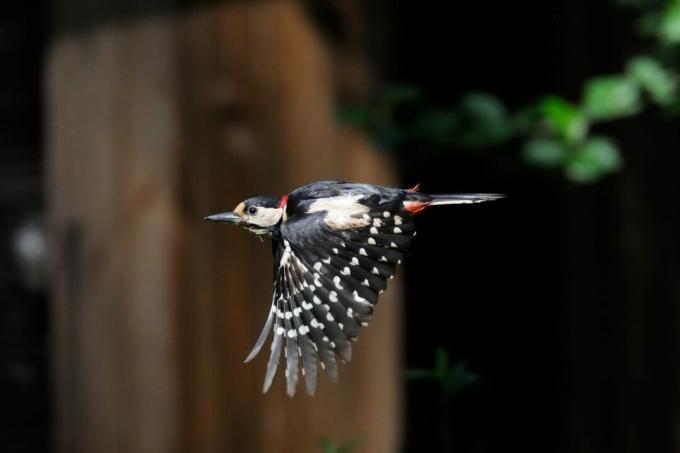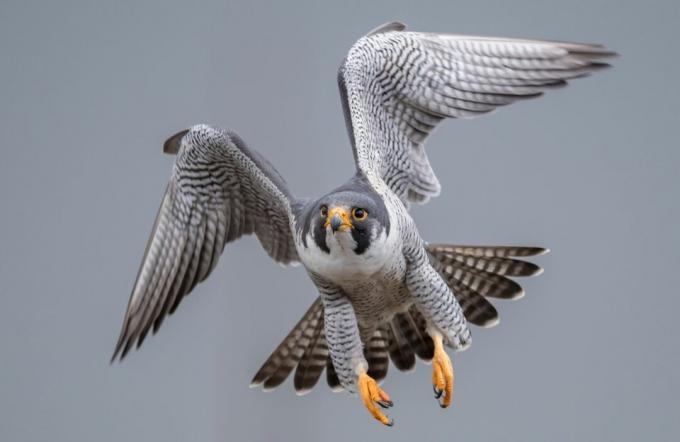How do birds fly? How high do birds fly? Can birds fly backwards and how fast can they get? Answers to these questions and much more information about bird flight can be found below.

What man has long dreamed of and what he succeeded only after decades of research and experimentation is birds of Birth in the cradle - or in the nest -: Flying is a skill that birds only with very few other animals share. Just a few weeks after hatching, young birds make their first flight attempts and from then on spend a large part of their life in the air. Some species, such as the Common Swift, are so well developed that they almost never land and not only hunt and eat during the flight, but even sleep. You can find out exactly why birds can fly, what differences there are between the different types of flight and what heights and speeds the animals reach in our large information article.
contents
- Why can birds fly?
- Types of flight of birds
- Interesting facts about bird flight
Why can birds fly?
In order to be able to fly, birds use several laws of physics. Your entire body is adjusted to life in the air. In addition to their streamlined shape, birds have powerful pectoral muscles, which enable them to move their wings allow, and partially air-filled bones, their total weight as much as possible to reduce. The most important thing, of course, is the wings themselves. These are built in such a way that if the speed is sufficient, the air flowing past them is compressed on the top and thus flows faster than on the bottom. This creates a negative pressure on the wing surface and thus a suction that gives the birds the necessary lift.

Types of flight of birds
By using different air currents and targeted wing movements, birds can perform different types of flight:
- At the Gliding Birds spread their wings and let themselves be driven by warm updrafts, which are also known as thermals. Such updrafts occur when sunlight warms the earth's surface and the warm air rises upwards.
- At the glide the wings are also spread, but no updraft is used. Instead, the birds can glide leisurely towards the ground from a great height.
- Of the Rowing flight describes classic flying with the help of powerful wing beats. Without updrafts, this is the only way for birds to soar high or fly steadily straight without descending.
- Of the Soaring flight is a modification of the rowing flight, in which the wing tips describe a lying figure eight at high speed, whereby the birds generate constant updraft like a helicopter and thereby both stand in pleasure and fly backwards can. This type of flight is used, for example, by hummingbirds.
The use of different types of flight sometimes creates species-specific ones Flight images, by means of which one can recognize some bird species even from a great distance. A classic example of this is, for example, the Wave flight the woodpecker, which comes about when the birds alternately ascend with strong wing beats and then descend again with flapped wings.

Interesting facts about bird flight
With their impressive flying skills, birds regularly set exciting records. As the highest flyer, for example, the sparrow egg was measured, which has been proven to reach heights of 11,000 meters. Arctic terns, on the other hand, are the ultimate long-distance migrants. An individual with a transmitter set a record 96,000 km, which it covered in just ten months. And the title of the fastest bird in the world goes to the peregrine falcon, which swoops and reaches a speed of over 300 km / h.
Tip: You are also interested in the following questions: Can birds smell, hear & see colors? We'll give you the answers in our special article.

In order to achieve the speed needed to fly, birds have to provide large amounts of energy that they then have to take in again through food. If you want to support your garden birds in meeting their daily energy needs, you can use ours, for example Plantura corn dumplings to offer. The species-appropriate food dumplings consist of natural insect fat, valuable seeds, nuts and berries and thus provide plenty of energy for a large number of native wild birds.
Further information on the subject of "Feeding birds properly"In our special article you can find out which feed is suitable for which season and what constitutes species-appropriate bird feeding.
